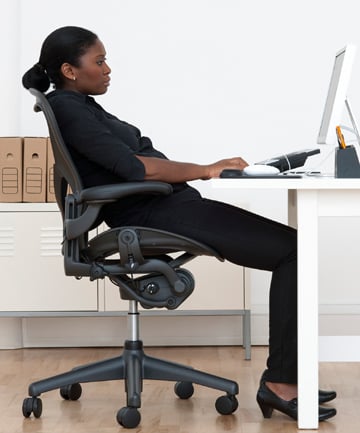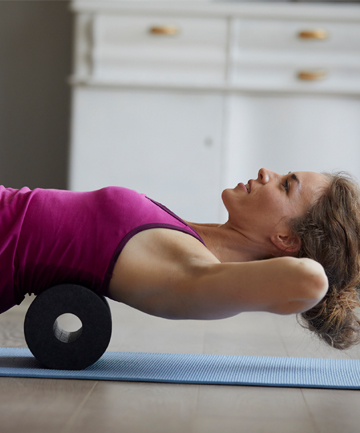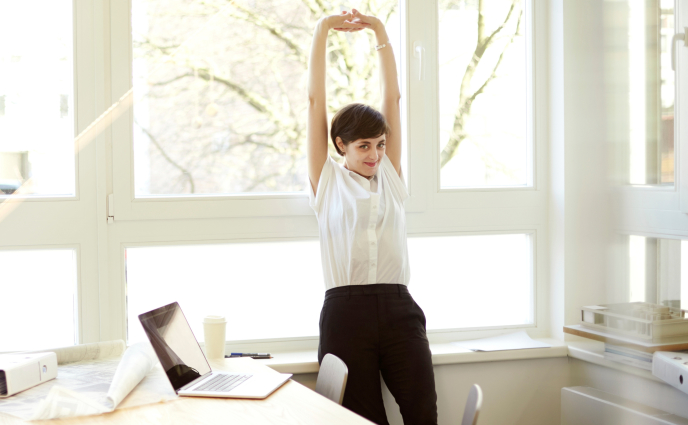Now that you know what signs to look for, let's address how to fix the problem. The core of the issue (no pun intended) is the way you're sitting while working or relaxing.
"When we recline in our seats with no support for the lower back and our legs resting on another surface, it creates a curve in the lumbar region of the spine that causes fluid to move to the posterior of the intervertebral discs. This position can apply undue pressure on those discs," explains Okubadejo. "The muscles of the neck and shoulders then have to work twice as hard to keep the head upright, which eventually leads to discomfort and tension in those muscle groups."
The bottom line is that sustaining this type of laid-back posture will cause a weakening of the back and abdominal muscles, affecting your core and triggering back pain. The lower back is also compromised because the thighs are not adequately supported and this causes strain.
"The optimal position is to be seated at a 90-degree angle with your feet flat on the floor and your back supported by the back of a chair," advises Okubadejo. "This position represents appropriate alignment, but even this position sustained for hours can cause discomfort as our body is meant to move and take a break from a sedentary position."
The solution? Assume this sitting position when working, but make sure to take breaks once every hour. You can go on a quick walk around the block, tend to some other errands or simply stand around for a break. Another option is to use a standing/sitting desk, like this Flexispot desk, $249.99, which allows you to oscillate between both positions. You shouldn't stand all day either so a healthy mix is ideal.
Image via Science Photo Library/Getty
"Stretching and exercising are critical in preventing and combating the ill effects stemming from pandemic-related back, neck and posture problems," says Jenai. "It is important to not let our bodies accommodate and adapt to poor posture and counterproductive activities. Daily exercise and stretching, emphasizing on moving muscles and joints through a full range of movement, are well worth the time and effort."
Start by focusing on your core (which includes your entire front, back and sides, not just your abs). The goal isn't to achieve a six-pack, but rather to improve the strength and flexibility of your core so you're more supported. Balancing exercises, Superman poses and deadlifts are all examples of core-strengthening exercises.
You should also focus on correcting posture issues, such as slumped shoulders and a curved back. Using a foam roller, like this one from Amazon Basics, $15.49, can help reverse that slumping. Tip: There are lots of YouTube videos to walk you through the exercises.
Finally, yoga, core exercises and light-to-medium impact exercise are great ways to ease yourself back into more cardio and intense workouts.
Image via Westend61/Getty






